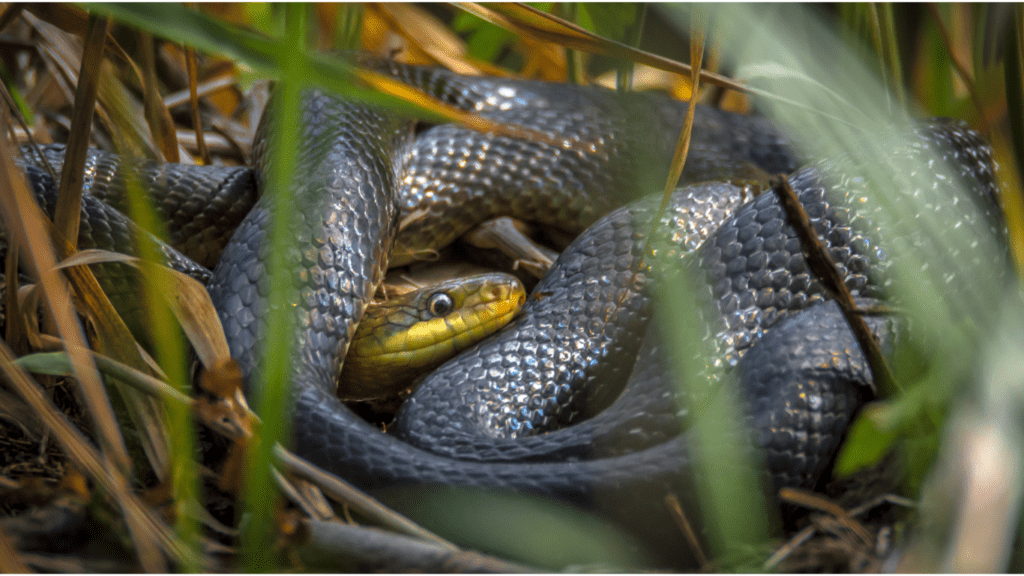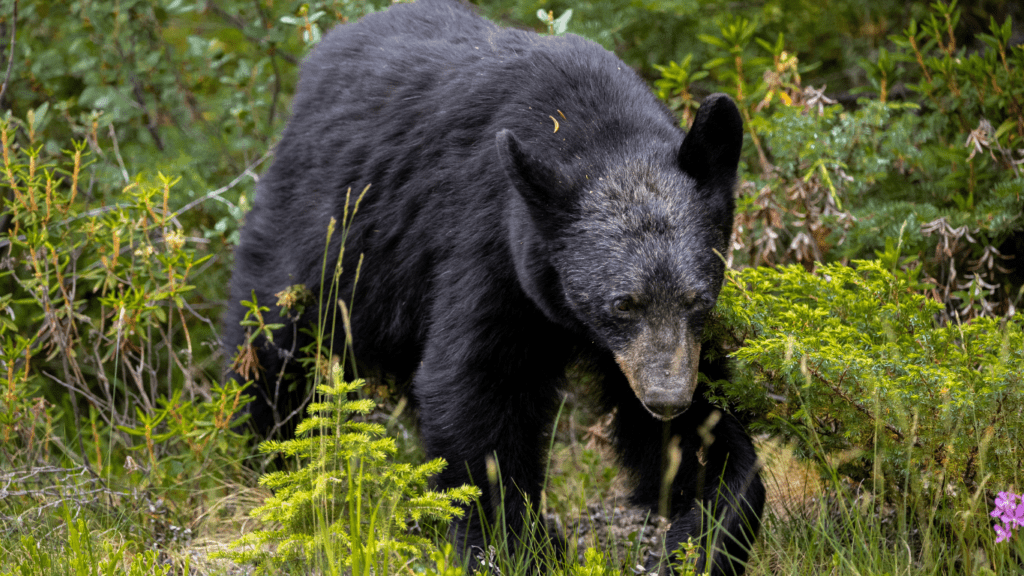Understanding Forest Dangers
Forests host various animals, each presenting unique threats. Recognizing these dangers before heading out is crucial for survival. Venomous snakes, for example, inhabit many forest regions. Their bites can be fatal if untreated. Knowing their habitats helps avoid encounters.
Large predators like bears and cougars also pose significant risks. Bears can be territorial, especially when surprised. Cougars, being stealthy hunters, can attack without warning. Understanding their behavior patterns reduces the likelihood of crossing paths.
Insects such as ticks and mosquitoes are more than just nuisances. Ticks can transmit Lyme disease, while mosquitoes spread West Nile Virus. Both can impact one’s health severely.
Finally, smaller animals like raccoons or squirrels might seem harmless but can carry rabies. Keeping food secured and maintaining a safe distance minimizes unwelcome interactions.
Identifying Dangerous Animals
Recognizing potentially dangerous animals in the forest is crucial for safe exploration. I’ll cover various types under this section, offering key identification tips.
Mammals
Identify bears by their large size, strong build, and distinct fur coloration. Grizzly bears have a hump on their shoulders, while black bears lack this feature. Cougars, also known as mountain lions or pumas, have a tawny color and long tails. They are elusive but leave distinct paw prints. Avoid aggressive behavior by keeping your distance and making noise to signal your presence.
Reptiles
Notable venomous snakes include rattlesnakes, copperheads, and coral snakes. Rattlesnakes have a distinctive rattle at the end of their tails, copperheads have hourglass-shaped markings, and coral snakes are brightly colored with red, yellow, and black bands. Be cautious around these reptiles as their bites can be harmful. Observe from a distance without provoking them.
Insects
Ticks and mosquitoes can transmit diseases like Lyme disease and West Nile virus. Ticks are small and attach to the skin, while mosquitoes are more active at dawn and dusk. Avoid heavily insect-infested areas and use repellents. Be aware of wasps and hornets, identifiable by their nests and striped bodies. Keep away from their nests to prevent stings.
Precautionary Measures
When entering the forest, taking certain preventive actions helps ensure a safe experience.
Clothing and Equipment
Wearing appropriate clothing and using the right equipment significantly reduce risks. I recommend using long sleeves and pants to protect against insect bites and scratches. Sturdy, closed-toe footwear prevents snake bites and foot injuries. In high-risk tick areas, use clothing treated with permethrin. Additionally, carrying a hat and sunglasses minimizes exposure to harmful UV rays and protects against unexpected encounters with wildlife.
For equipment, I suggest bringing a reliable GPS device and a map, making it easier to navigate unfamiliar territory. A first-aid kit is essential, including items like:
- bandages
- antiseptic wipes
- snake bite kit
High-quality insect repellent, preferably containing DEET, should also be packed to ward off mosquitoes and ticks.
Safe Camping Practices
Setting up camp safely is crucial for avoiding dangerous animal encounters. Choose a campsite away from animal trails and water sources, as both attract wildlife. Keep food stored securely in bear-proof containers or hung high between trees to prevent attracting curious animals like bears and raccoons.
Always keep a clean campsite. Dispose of garbage properly or pack it out to avoid enticing animals. Sleeping quarters should be set up at least 200 feet from cooking areas to minimize food odors near the sleeping area. If you’re in an area known for large predators, such as bears, consider using electric fences around the campsite for extra security.
By following these measures, the risks associated with forest wildlife can be significantly minimized.
What To Do If You Encounter Dangerous Animals

While forest adventures offer incredible experiences, encounters with dangerous animals can be daunting. Knowing how to react is crucial for safety.
Handling Mammal Encounters
Stay calm when facing large mammals (e.g., bears, cougars). Avoid direct eye contact and back away slowly. Do not run, as it triggers the animal’s chase instinct. With black bears, make yourself appear larger and make noise. For cougars, maintain eye contact and speak loudly while backing away. Use deterrents like bear spray if the animal approaches.
Managing Reptile Interactions
Keep your distance when spotting venomous reptiles (e.g., rattlesnakes, copperheads). Do not attempt to handle or provoke them. Walk around the reptile slowly, giving it ample space. Wear boots and watch your steps to avoid accidental bites. If bitten, seek medical help immediately, keeping the affected limb immobilized at heart level.
Dealing With Insect Attacks
Remain still if swarmed by insects (e.g., wasps, hornets). Sudden movements agitate them. Move away slowly and find shelter. Use bug repellents containing DEET for prevention. If stung, treat the area with antihistamines and clean the wound. Seek medical care if allergic reactions occur (e.g., difficulty breathing, swelling).
First Aid Tips
Injuries from bites and stings can happen unexpectedly while in the forest. Knowing how to provide first aid can make a significant difference.
Treating Bites and Stings
After identifying a bite or sting, initial reactions need to focus on cleaning the area. Use clean water and mild soap to gently wash the wound. For bee stings, remove the stinger by scraping it out with a flat surface instead of pinching it. Apply a cold compress to reduce swelling and pain. If dealing with venomous snake bites, keep the affected limb immobilized and at or below heart level. Avoid applying ice or cutting the wound, and seek immediate medical attention.
For tick bites, use fine-tipped tweezers to grasp the tick close to the skin’s surface and pull upward with steady, even pressure. Clean the bite area and your hands with rubbing alcohol or soap and water. Store the tick in a sealed bag for later identification in case illness occurs.
When to Seek Medical Help
- Seek medical help promptly if the bite or sting causes severe reactions.
- Symptoms like difficulty breathing, swelling of the face or throat, or a rapid pulse indicate anaphylaxis, requiring an epinephrine shot if available or emergency services.
- For venomous snake bites, visit a hospital immediately.
- Monitor for signs of infection in any bite or sting, such as increased pain, redness, swelling, or pus.
- Rabies risk from mammal bites like raccoons or squirrels necessitates a healthcare visit for potential rabies shots.



 Lead Forest Survival Specialist & Outdoor Educator
Timothy Peters is Whisper Forest Ways’ resident expert on wilderness survival and all things related to thriving in the outdoors. With a background in environmental sciences and over a decade of hands-on survival training, Timothy combines scientific knowledge with practical experience to teach readers essential survival skills, such as shelter building, fire making, and foraging. His approach emphasizes respect for the natural world and sustainability, ensuring that all of his methods encourage low-impact interaction with the environment. Whether you’re new to outdoor adventures or a seasoned explorer, Timothy’s detailed guides and insights provide invaluable knowledge for safely and confidently navigating the wild.
Lead Forest Survival Specialist & Outdoor Educator
Timothy Peters is Whisper Forest Ways’ resident expert on wilderness survival and all things related to thriving in the outdoors. With a background in environmental sciences and over a decade of hands-on survival training, Timothy combines scientific knowledge with practical experience to teach readers essential survival skills, such as shelter building, fire making, and foraging. His approach emphasizes respect for the natural world and sustainability, ensuring that all of his methods encourage low-impact interaction with the environment. Whether you’re new to outdoor adventures or a seasoned explorer, Timothy’s detailed guides and insights provide invaluable knowledge for safely and confidently navigating the wild.
